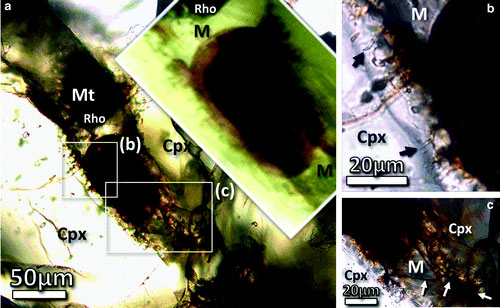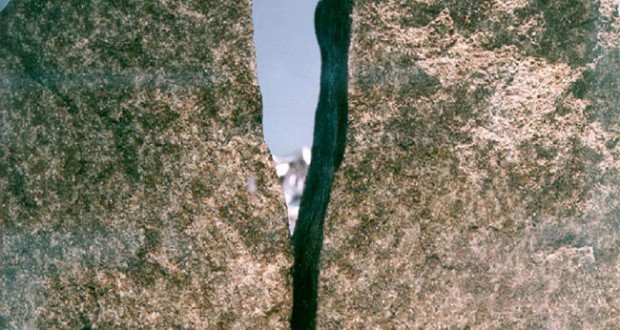Posted by: Jason McClellan September 16, 2014 0 982 Views
New research on a Martian meteorite supports the idea
that Mars has the right conditions to support life
.
Scientists from the UK and Greece found something
interesting in a piece of the Nakhla meteorite, which fell to Earth in 1911 in
Egypt. Dr Elias Chatzitheodoridis of the National Technical University of
Athens first discovered the unusual feature embedded within the chunk of
meteorite. He contacted his colleague, Professor Ian Lyon at the University of
Manchester, to get his take on the odd structure.
“In many ways it resembled a fossilised biological
cell from Earth but it was intriguing because it was undoubtedly from Mars,”
explains Lyon. “Our research found that it probably wasn’t a cell but that it
did once hold water – water that had been heated, probably as a result of an
asteroid impact.”

Transmitted light photomicrographs of the odd
structure. (Credit: Astrobiology)
The team’s discovery is significant because it adds
more evidence to support the notion that Mars has, or had, the right conditions
to support life beneath its surface. If large asteroids hit Mars in the past,
as the evidence suggests, researchers believe it created long-lasting
hydrothermal fields that warmed the subsurface of Mars, making it a habitable
environment. “We have been able to show the setting is there to provide life,”
Lyon explains. “It’s not too cold, it’s not too harsh. Life as we know it, in
the form of bacteria, for example, could be there, although we haven’t found it
yet. It’s about piecing together the case for life on Mars – it may have
existed and in some form could exist still.”
Astrobiology.com reports that the team plans to investigate other
materials in the meteorite sample in search of possible biological signatures
that will provide scientific evidence of life on Mars, past or present.
The team’s recent findings are published in the
journal Astrobiology in a paper titled, “A Conspicuous Clay
Ovoid in Nakhla: Evidence for Subsurface Hydrothermal Alteration on Mars with
Implications for Astrobiology.”
Other scientists, including former NASA astrobiologist Richard Hoover have published previous studies asserting the
discovery of extraterrestrial life within Martian meteorites. Hoover even
suspects that evidence of extraterrestrial life on Mars was intentionally
destroyed.
Based on multiple studies, it’s becoming clearer that
life once existed on Mars. The question remains: Is there life on Mars today?
With data acquired by Curiosity and other Martian rovers, scientists believe
the planet may still be habitable today. So it’s extremely likely that future
studies will uncover additional evidence showing present-day life on Mars.
ABOUT JASON MCCLELLAN
Jason McClellan is a UFO journalist and the
producer/co-host of the web series Spacing Out! He is also the web content
manager and staff writer for OpenMinds.tv, and a co-organizer and technical
producer of the International UFO Congress. As a founding member of Open Minds,
Jason served as a writer and editor for the now defunct Open Minds magazine. He
has appeared on Syfy, NatGeo, and, most recently, he co-starred on H2's Hangar
1: The UFO Files. ------ Follow Jason on Twitter @acecentric and subscribe
to Jason's updates on Facebook.

No comments:
Post a Comment